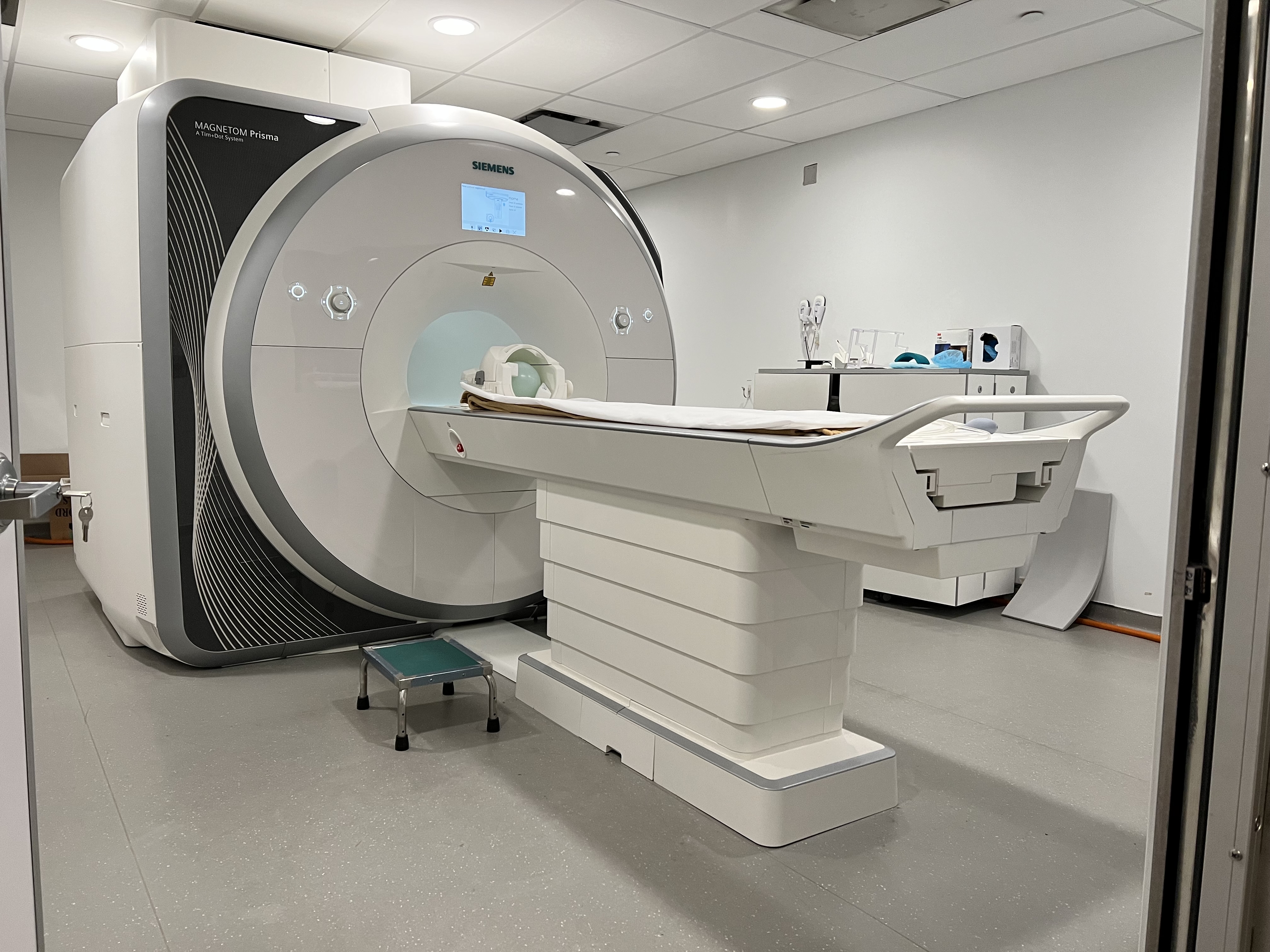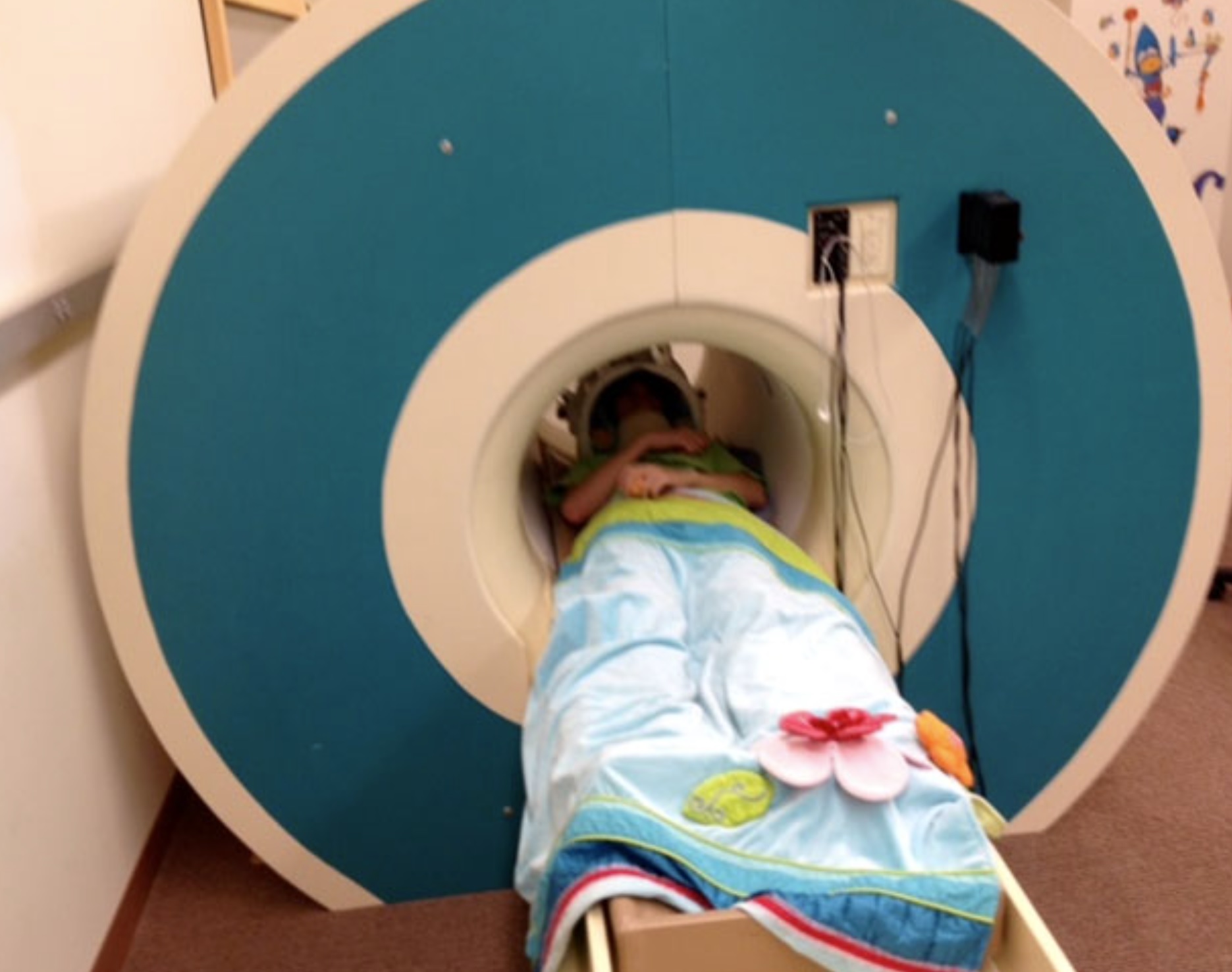Facilities
The ToNI facility resides in the University of Toronto’s Centre for Biological Timing and Cognition, located at 325 Huron St., Toronto, ON, Canada. The centre is also connected via an alternative entrance to the first floor of the Ramsay Wright building.

Siemens Prisma 3T Full-Body MRI Scanner
In October of 2017, ToNI installed a Siemens Prisma 3T MRI scanner. The Prisma was designed by Siemens with the research community in mind. It is the fastest whole-body 3T scanner of its class that is commercially available, making it ideal for EPI imaging (both BOLD- and diffusion-weighted imaging). Our scanner enables access to the most recently developed imaging technologies, including Simultaneous Multi-Slice acquisition for faster acquisition (shorter TR and/or increased resolution). In addition, we offer the Siemens Spectroscopy Package, which bundles Single Voxel Spectroscopy, 2D Chemical Shift Imaging, 3D Chemical Shift Imaging, and syngo Spectroscopy Evaluation. We also have access to work-in-progress packages, including multi-echo acquisition for better signal in brain regions prone to susceptibility artifacts, including frontal and temporal regions. More details can be found here: Prisma 3T
Ancillary and Peripheral Equipment
ToNI maintains a variety of ancillary and peripheral systems for presenting stimuli and collecting a variety of behavioral and physiological signals. These systems include stimulus computers running both OSX and Windows platforms.
- Stimulus presentation: To display visual stimuli to participants in the MRI scanner, we use a BOLDscreen display. Our BOLDscreen monitor is an MR compatible screen with high resolution (32”, 1920x1080, 100Hz or 120Hz refresh rate) and zero delay. The displays are calibrated to obtain high-fidelity psychophysical measurements in the MR scanner. For stimulus presentation, a PC running Windows or a user owned experiment laptop is used for visual presentation. Matlab, PsychToolbox, E-Prime, Presentation, PsychoPy, and Inquisit are available and supported.
- Behavioural responses: We routinely collect behavioral responses during fMRI experiments, using different button boxes and a joystick. The buttons emulate key presses on the computer. Our standard button box is a 4-button keypad that has been specially designed for use in an MR scanner (Current Designs, HHSC-1X4-CR). We also have a bimanual option in the form of two 4-button hand-held response pads (Current Designs, HHSC-2X4-N4), as well as a hand-held joystick response device (Current Designs, HHSC-JOY-5).
- Audio equipment: Auditory stimulation can be delivered to a subject in the MRI scanner in several ways. One option is the conventional Siemens air-driven headset. In addition, for auditory experiments requiring a very flat frequency response and fine control of low-level auditory characteristics, the center has a set of in-ear MRI-compatible headphones (Sensimetrics, model S14) that have been modified to provide excellent isolation from scanner noise. The earphones are small enough to fit within a small head coil, including our 32- and 64-channel head coils.
- Eye tracking: Eye-position is routinely monitored in the MRI scanner with an infrared camera equipped with a telephoto lens, designed specially for use in the MRI scanner (SR Research, EyeLink 1000 Plus). The system consists of a camera, mirror system, and dedicated host computer running the EyeLink OS. The camera that rests in the bore of the scanner is focused on either eye, first through a two-way coated ‘hot’ mirror that allows the camera to see the eye while appearing transparent to the subject, and then through the same mirror that subjects use to view the visual display. The specifications on this system are as follows:
- Sampling and output rates: 500/1000/2000 Hz
- System accuracy: 0.25 – 0.5 degrees of visual angle
- Visual angle resolution: less than 0.01 degrees of visual angle
- Tracking range: 32 degrees horizontally, 25 degrees vertically.
- Physiological measures: Complex physiological signals in the MRI can be collected using the Biopac system available at ToNI. This system permits the acquisition of several physiological signals, including: Electrocardiogram (ECG), Electromyogram (EMG), Respiration, blood pressure, and Electrodermal activities such as Galvanic skin response (GSR). These signals can serve as valuable measures of nervous system function in different experimental designs. Electrical stimulation is also available for constant current and constant voltage electrical stimulation. Collected data can be analyzed using Acqknowledge software, which provides an environment to view, record, analyze, and transfer data. Cardiac signal can also be recorded using Siemens Bluetooth-enabled pulse oximeter that clips to the index finger of the subject. Respiration can be recorded using a Siemens pneumatic respiratory belt. These physiological signals may be used to correct for artifacts, physiological alterations, induced field inhomogeneity, or interference with the experiment.

Mock Scanner Room
Shells of a previously active 1.5T Siemens Avanto scanner are used to build an MRI simulator or “mock” scanner. This allows participants to become acclimatized to the scanner environment before data is actually acquired. In addition, participants can be trained to keep their head still using behavioral feedback. Motion is detected by a Mo-Trak unit from Psychological Software Technologies (PST). While the participant lies in the mock scanner, a motion detector is placed on the participant’s head and motion-related feedback can be provided. Realistic MR scanner sounds are played during the session to further enhance the simulation.
Computing: Data Management and Analysis
The facility houses a file server, which currently includes 52 TB of shared disk space. The drives are configured for a combination of redundancy and performance. The server is located in a secure and climate-controlled location. Researchers can access their study data remotely through a secure connection, immediately following the completion of their scanning session.
Amenities
To provide researchers with a functional and productive environment, a number of amenities are available.
-
General/Security: To simplify access to the secure building, video intercoms facilitate the identification of and communication with participants on arrival. Secured lockers are available for participants’ belongings, and Wi-Fi is available in all areas. A limited number of locked drawers are also available to labs by request, to store study-related materials on-site.
-
Work and conference space: Between scans there is a quiet workspace available, which includes a large presentation screen and computer, and conference-style seating for up to seven people. One of the video intercom systems is also present in the room, making it a convenient location to wait for the next participant.
-
Behavioral testing room: For studies requiring behavioral data before or after scans, appropriate testing space is also available. There are two testing stations with space suitable to place laptops for one to two participants in a private and low-stimulus environment.
-
Interview room: To facilitate obtaining informed consent, or other private communication with participants, ToNI offers an interview space with a table seating two.